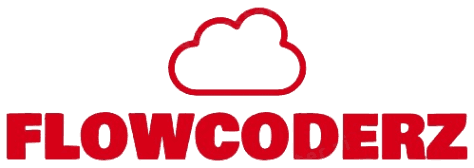Security is at the core of Salesforce’s platform, ensuring customer data is protected while maintaining accessibility and performance. Salesforce’s Trust & Security Model is built on a robust framework designed to protect data, enforce compliance, and instill confidence among businesses using the platform.
As a Salesforce Administrator, understanding this security model is critical for managing access, protecting sensitive data, and ensuring compliance. In this guide, we’ll break down the key components of Salesforce’s Trust & Security Model and best practices for admins.
What is the Salesforce Trust & Security Model?
Salesforce operates under a shared responsibility model, ensuring that both the platform and its users contribute to security. The model is built on four key principles:
- Trust – Transparency in security, performance, and availability via trust.salesforce.com.
- Compliance – Aligning with global security standards (ISO 27001, SOC 2, GDPR, HIPAA, etc.).
- Data Protection – Enforcing encryption, authentication, and access controls.
- User Control – Empowering admins to configure security settings based on business needs.
Salesforce’s security model is layered, incorporating organization-wide settings, object-level security, field-level security, and record-level security.
1️⃣ Organization-Level Security
🔹 Authentication & Identity Management
Salesforce provides multiple authentication mechanisms to ensure secure access: ✔ Multi-Factor Authentication (MFA): Mandatory for all users to add an extra layer of security. ✔ Single Sign-On (SSO): Integrate with identity providers like Okta, Microsoft Azure, or Google. ✔ OAuth 2.0 & OpenID Connect: Secure API authentication and integrations. ✔ IP Restrictions: Restrict user logins from unauthorized networks. ✔ Login Hours: Define specific time windows for user access.
🔹 Session Security & Encryption
✔ Session Timeout Policies: Automatically log out inactive users. ✔ Field-Level Encryption: Secure sensitive data using Salesforce Shield. ✔ TLS Encryption: Ensures secure data transmission.
2️⃣ Object-Level Security (Profile & Permission Sets)
🔹 Profiles
Profiles define what users can do within Salesforce. Each user has one profile that controls: ✔ Object-level permissions (CRUD - Create, Read, Update, Delete) ✔ Tab visibility ✔ App access ✔ Page layouts
🔹 Permission Sets
Permission sets extend access beyond profile restrictions. Best practices include: ✔ Assigning additional permissions without modifying profiles. ✔ Using permission set groups to manage user permissions efficiently. ✔ Limiting admin permissions to a subset of users.
3️⃣ Field-Level Security
🔹 Restricting Sensitive Information
✔ Control which fields users can view or edit. ✔ Configure field permissions in Profiles or Permission Sets. ✔ Use Shield Platform Encryption for highly sensitive fields.
🔹 Use Case Example:
A sales rep needs access to customer phone numbers but should not see salary details in an employee record.
4️⃣ Record-Level Security (Sharing Model)
Record access is controlled via Org-Wide Defaults (OWD), Role Hierarchies, Sharing Rules, and Manual Sharing.
🔹 1. Organization-Wide Defaults (OWD)
Defines the baseline level of access: ✔ Private: Only record owners can access their records. ✔ Public Read Only: Everyone can view, but only owners can edit. ✔ Public Read/Write: Everyone can view and edit. ✔ Controlled by Parent: Inherits access from a parent object.
🔹 2. Role Hierarchy
Allows record access to users higher in the hierarchy. Best practices: ✔ Avoid granting access by default—start with strict access and loosen as needed. ✔ Use roles for reporting but not security enforcement.
🔹 3. Sharing Rules
Used to grant record access based on: ✔ Criteria-based Sharing – Share records matching specific conditions. ✔ Owner-based Sharing – Share records owned by users in a certain role.
🔹 4. Manual Sharing
✔ Allows users to share individual records when necessary. ✔ Used for one-off exceptions where other sharing rules are too broad.
🔹 5. Apex Sharing (Programmatic Sharing)
✔ Used when standard sharing mechanisms aren’t flexible enough. ✔ Ideal for complex sharing logic based on custom business rules.
5️⃣ Salesforce Shield: Advanced Security Features
For enterprises needing extra security, Salesforce offers Shield with the following capabilities:
✔ Event Monitoring – Tracks user activities (logins, reports, API calls).
✔ Field Audit Trail – Logs changes beyond standard field history tracking.
✔ Platform Encryption – Encrypts data at rest.
✔ Shield Security Health Check – Evaluates security vulnerabilities.
Best Practices for Salesforce Security
🔹 Enable Multi-Factor Authentication (MFA) to protect user accounts. 🔹 Restrict IP login ranges to prevent unauthorized access. 🔹 Define session timeout policies to prevent idle access. 🔹 Use least privilege access – assign only the permissions users need. 🔹 Regularly review field-level security to ensure sensitive data is protected. 🔹 Monitor Apex Sharing to avoid excessive sharing that could lead to security loopholes. 🔹 Use Security Health Check (Setup → Security → Health Check) to identify vulnerabilities.
Conclusion
Salesforce’s Trust & Security Model ensures that organizations can confidently store, manage, and process business data in a highly secure environment. By implementing the right authentication, access control, and encryption strategies, Salesforce Admins play a critical role in maintaining data security and compliance.
Stay ahead by continuously reviewing security best practices and leveraging tools like Salesforce Shield and Health Check to enhance your org’s security.
💡 Want to learn more? Explore our Salesforce Admin Tutorials for step-by-step security guides!

